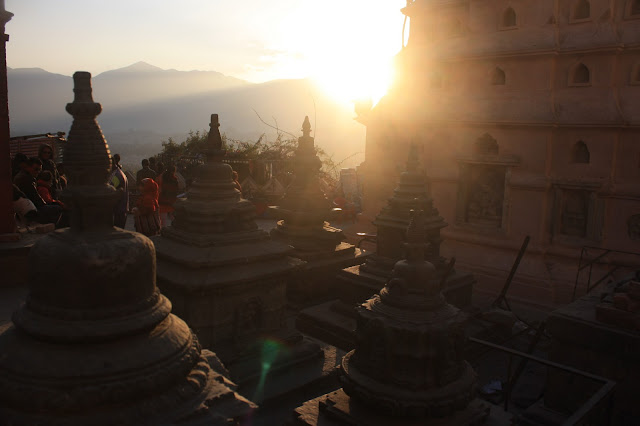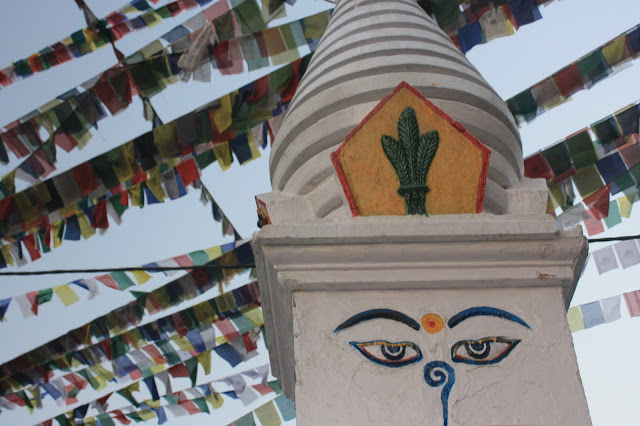Our first stop was a Buddhist monastery school. We were served delicious sweet tea and biscuits, while learning about the school from the monk who has worked as the principal for the past few years. The school moved to Kathmandu from another site after the disastrous earthquake here in 2015. As a result, many of the students are orphans. The school provides everything for students, books, pencils, food, accommodation, etc.
We also had a chance to observe a maths lesson. Students sat in rows and watched their warm and friendly teacher explain percentages. Interestingly, all the textbooks that we saw today were in English. Yet, when speaking to students and teachers, their English was fairly limited. While observing the maths class, I also managed to disrupt the lesson accidentally... I asked a student about their Frozen pencil case. Before I knew it, half the class were asking me to sing. Oops!
Next we had a brief visit to the school where we will be hosting a four day conference for about 100 local teachers. We had a quick look around the classrooms and a brief chat to the incredibly friendly students.
Finally, we ended the day with sunset at Swayambhunath Temple, also known as the monkey temple. There are hundreds of monkeys that are hanging out at the temple. We arrived here just in time for sunset over Kathmandu. It was a stunning sight!
It was a busy day and left me with lots and lots of questions. Two of the key ones for today:
- Digital technology is completely absent from the school we visited. From what I can tell, it seems to be absent in most schools. With digital technology playing such a huge role in our global economy, will this absence of this affect Nepal's chances of building a stronger economy in the future?
- Through much of its history (and even today), Nepal is very isolated from the rest of the world. I'm reading a great book at the moment called Culture Map by Erin Meyer. The book suggests that often in cultures that have been very isolated, there are lots of reading between the lines communication. For example, the same word could have lots of different meanings depending on the context it is being used. Additionally, much of the communication is non verbal. This has me wondering, in the west where our communication is much more explicit, how much do we miss when working in a multicultural context?













No comments:
Post a Comment